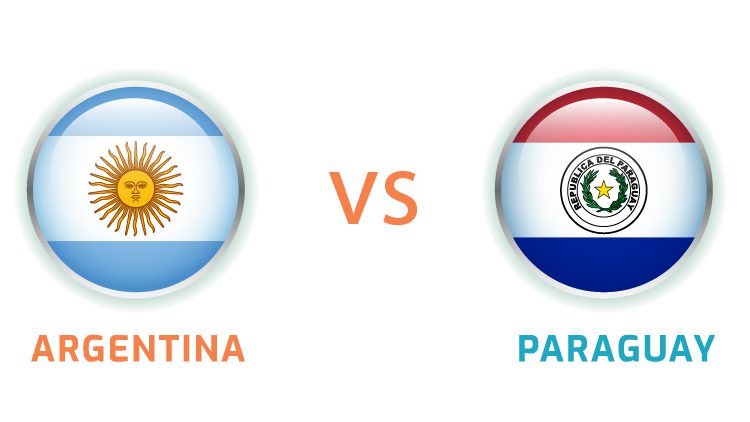
History
Argentina and Paraguay are both countries located in Latin America. Argentina is a South American country bordered by the Atlantic Ocean, while Paraguay is landlocked between Brazil, Bolivia, and Argentina. The two countries have been intertwined since the 19th century when Rio de Janeiro was the dominant power in Latin America. In 1811, Paraguayan President Carlos Antonio López declared independence from Brazil, with his son Francisco Solano López as Vice President. However, it wasn’t until 1862 that Argentina officially recognized Paraguay as an independent nation.
During the 19th century, Paraguay and Argentina struggled to control Rio Paraguay, which formed a crucial border between the two countries. This struggle resulted in the Tri-Border Area becoming a disputed territory between the two countries. It wasn’t until 1865 that Alfredo Stroessner, the founder of modern Paraguay, negotiated the Treaty of the Triple Alliance, which stabilized the borders. In the 20th century, both countries underwent significant changes in their political and economic landscapes. Under Carlos Antonio López, Paraguay was able to foster foreign investment, modernize its capital city Asunción, and develop its natural resources. Argentina also experienced economic growth during the late 20th century due to reforms initiated by Carlos Menem. However, Argentina has faced several political instabilities since then, which have caused significant economic downturns and weakened its national currency.
Overall, Argentina and Paraguay have a long and intertwined history, marked by periods of both cooperation and conflict. Although their histories are intertwined, they differ in many ways, from population size to language to religion to government structure.
Geography
Argentina and Paraguay are two countries located in South America with distinct boundaries. Uruguay, Brazil, and Bolivia border Argentina, while Brazil, Argentina, and Bolivia surround Paraguay. Paraguay is situated at the heart of the South American continent, while Argentina is located to the south of it. The geography of Paraguay is dominated by the Río de la Plata, a large river that splits the country in two. The Rio Grande separates Paraguay from Argentina and Bolivia, while Carlos Antonio López and Francisco Solano López are two rivers that flow across the north and east of the country. One of Paraguay's most iconic geographical features is its national color, emerald green. This lush color reflects its subtropical climate and various plant life that thrive in warm, humid environments. Meanwhile, Argentina is known for its wide array of landscapes and climates, ranging from deserts in the northwest to snow-capped mountain peaks in the south.
Argentina and Paraguay have distinct geographies that have helped shape their unique cultures and identities.
Population
Argentina is the second-most populous country in South America, with a population of 45.3 million, while Paraguay has a population of 7 million. Argentina is one of the most densely populated countries on the continent, while Paraguay is one of the least densely populated.
Most of Argentina’s population is concentrated in the central and eastern parts of the country, while Paraguay’s population is spread out more evenly across the country. The Argentine population is overwhelmingly comprised of European descendants and is home to many immigrant communities. By contrast, Paraguay’s population consists mainly of mestizos (people of both European and Amerindian descent) as well as small numbers of Europeans and Amerindians. Paraguay's most notable citizens are former president Carlos Antonio López and his son, Francisco Solano López, who led the country during the disastrous War of the Triple Alliance (1864–1870). Although Paraguay lost this war, the nation has since experienced significant economic growth and today is seen as an up-and-coming country in South America.
Language
Argentina and Paraguay are home to two different official languages. In Argentina, the primary language is Spanish, while in Paraguay, it is Guarani. Most people in Paraguay speak both Spanish and Guarani, a unique language spoken in the region since before the arrival of the Spanish in 1524. Guarani was declared an official language in Paraguay in 1844 by President Carlos Antonio López. This was an essential step in keeping the culture and language of the native population alive, despite the long period of Spanish rule and influence. During the War of the Triple Alliance, Francisco Solano López declared that the two languages would be taught together in schools so that all Paraguayan citizens could communicate. Since then, both languages have remained popular in Paraguay, although Spanish is becoming increasingly dominant. Spanish remains the primary language in Argentina, with a few minor exceptions. As a result of its large immigrant population, some parts of Argentina also feature a variety of other languages, such as German and Italian.
Religion
The majority of the population in Argentina and Paraguay are Roman Catholic, although there are some differences between the two countries. Catholicism is a significant part of Argentina's national identity and culture, while in Paraguay, the Church had an essential role in the country's politics during the 19th century. Under presidents Carlos Antonio López and his son Francisco Solano López, the government was closely linked to the Catholic Church, and religion played a large part in their policies. While many Paraguayans still practice Catholicism, the influence of the Church on public life is not as strong as it once was. In addition to Catholicism, Protestantism is practiced by many people in both countries, while smaller religious groups such as Judaism and Islam can also be found in each nation.
Culture
The cultures of Argentina and Paraguay share many similarities but also have unique characteristics. Argentinian culture has been strongly influenced by its European heritage, while Paraguayan culture has been shaped by its indigenous population. Both countries are known for their vibrant music and dance scenes, particularly the tango and polka-like musical genres. In addition to its music, each country has folklore, arts, and literature. Argentina has a strong literary tradition, with authors such as Jorge Luis Borges and Julio Cortázar making lasting impressions on the world. Paraguay is known for its vibrant traditional art forms, including ceramics and woodwork.
Both countries are deeply rooted in the political leadership of historical figures such as Francisco Solano López in Paraguay and Carlos Antonio López in Argentina. These leaders' legacies have had lasting effects on the two countries’ cultural identities and their economic and social policies.
Government
Argentina and Paraguay have different forms of government. In Argentina, the President is the head of state, and a two-chamber legislative branch is in place. The country is divided into 23 provinces, each with its legislature. In Paraguay, a President serves as the head of state, with a unicameral legislative branch. The nation is divided into 17 departments. Argentina's current President is Alberto Fernández, elected in 2019 and assumed office in December of that year. Paraguay's current President is Mario Abdo Benítez, who was elected in 2019 and took office in August. The first president of Paraguay was Carlos Antonio López, who served from 1844 to 1862. López was succeeded by his son, Francisco Solano López, who held office until 1870, when he was overthrown during the Paraguayan War.
Economy
Argentina and Paraguay have distinct economic profiles, with both countries relying heavily on their agricultural sectors. Argentina is more industrialized and has a more extensive service sector than Paraguay. In the 19th century, under the rule of Carlos Antonio López and his son Francisco Solano López, Paraguay began to industrialize, developing a textile industry, canneries, and a rail system. This process of industrialization was stopped by the Paraguayan War, leaving the country to focus mainly on its agricultural sector. Today, Paraguay relies heavily on soybean and beef exports, while Argentina relies on its exports of beef, wheat, maize, dairy products, and soybeans. Argentina also has a vital manufacturing sector and a rapidly growing service sector. Both countries are heavily dependent on imports for essential goods and services.
Climate
The climate of Argentina and Paraguay can be divided into four distinct seasons. In Argentina, the northern regions are generally more temperate, while the south tends to have a subtropical climate. In Paraguay, the north area typically has a subtropical climate, while the south tends to have a more temperate climate.
In Argentina, winter occurs from June to August and is the coldest season, with temperatures often dropping below 0°C (32°F). Summer occurs from December to February and is characterized by high temperatures, often reaching 40°C (104°F).
In Paraguay, winter occurs from May to August and is generally more relaxed than in Argentina. Summer occurs from December to March and is slightly hotter, reaching 40°C (104°F).
One of the most defining climatic events in the region was from 1864–1870
War of the Triple Alliance was fought between Paraguay and the alliance of Brazil, Argentina, and Uruguay. During this conflict, Paraguayan dictator Francisco Solano López led his forces through a scorched earth campaign and caused immense environmental damage, especially in northeastern Argentina. After the war, President Carlos Antonio López tried to improve the environment, but much of the damage caused was irreversible.
Sports culture
Sports have long been a point of national pride for both Argentina and Paraguay. Soccer (or football) is the most popular sport in both countries, with Francisco Solano López being an early supporter of the game in Paraguay. In Argentina, soccer was popularized by Carlos Antonio López in the 19th century and is the most-watched sport in the country. In Argentina, basketball and rugby are also popular, while volleyball and field hockey are increasingly becoming more popular. Meanwhile, Paraguay has its traditional sports, such as Ulama, a fast-paced ball game, as well as golf, tennis, and rugby. Cricket is also becoming increasingly popular in Paraguay as it gains more visibility on the international stage.
Argentina and Paraguay participate in international tournaments such as the Copa América and the FIFA World Cup. The national teams of both countries are fiercely competitive in their respective regional and international games.
Summary
The differences between Argentina and Paraguay are vast, ranging from their histories to their climates. Argentina has a long history as an independent nation, while Paraguay was part of the Spanish Empire until 1811, when it declared its independence. Geographically, Argentina is located in the southern cone of South America and consists mainly of rolling plains. At the same time, Paraguay lies in the heart of South America and is characterized by subtropical forests, grasslands, swamps, and wetlands. The population of Argentina is mostly of European descent, while Paraguay is mainly comprised of mestizo or mixed-race peoples. Argentina's official language is Spanish, while Guarani is co-official with Spanish in Paraguay.
Paraguay is predominately Catholic, while Argentina comprises a mix of Catholics and Protestants. Both countries have vibrant cultures that are rooted in their respective historical backgrounds, as well as their diverse populations. Argentina has a presidential representative democratic republic, while Paraguay is a constitutional republic with a president that wields considerable power. The economy of Argentina is one of the largest in South America, while Paraguay's economy mainly depends on agricultural production. Both countries experience warm temperate climates. However, Argentina experiences more extreme weather due to its geographical position.
Sports culture plays a significant role in both countries, with soccer being the most popular. Soccer has played a significant role in the history of both countries, with figures such as Francisco Solano López and Carlos Antonio López becoming beloved national heroes. In conclusion, the differences between Argentina and Paraguay are vast, making them both unique and exciting destinations to explore.
Frequently Asked Questions
Argentina is a large country that spans much of the southern part of South America, whereas Paraguay is a much smaller landlocked country located in the heart of the continent.
Argentina has a largely European-influenced culture, strongly emphasizing the arts, music, and cuisine. On the other hand, Paraguay has a more indigenous and rural culture, with a greater emphasis on traditional crafts, festivals, and rustic cuisine.
Argentina has a more extensive and diversified economy, with a strong focus on agriculture, mining, and industry. Paraguay's economy mainly depends on agriculture, with soybeans being its main export product.
In Argentina, Spanish is the official language spoken by most of the population. In Paraguay, both Spanish and Guarani (indigenous languages) are official languages, and many Paraguayans are bilingual.
Argentina has a presidential representative democratic republic system, with a President who serves as both head of state and head of government. Paraguay has a usual presidential democratic system, with a President who serves as head of state and a Prime Minister who serves as head of government. Additionally, Paraguay has a bicameral Congress, while Argentina has a unicameral National Congress.
https://www.universal-translation-services.com/whats-the-difference-between-argentina-and-paraguay/


Comments
Post a Comment